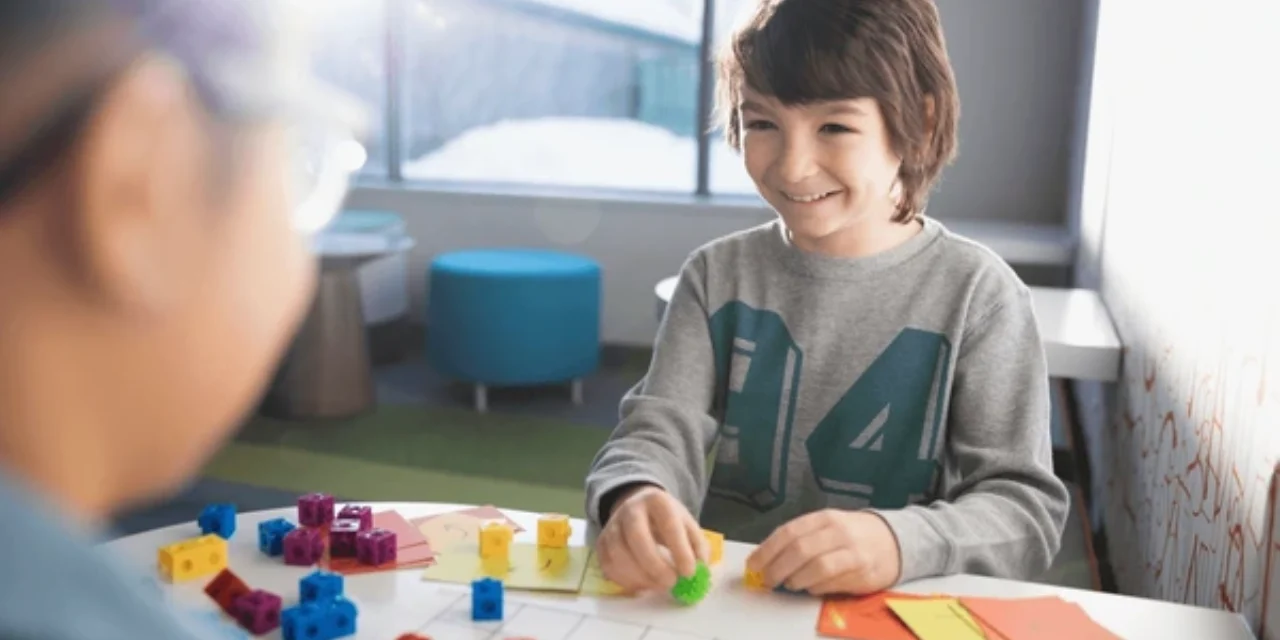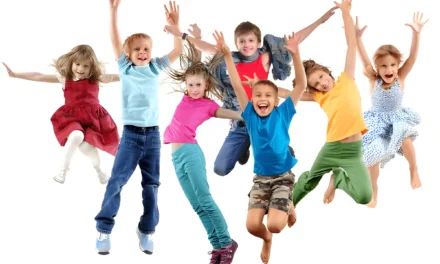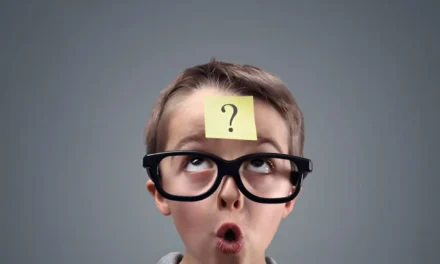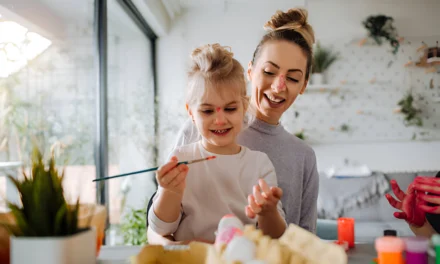Imagine a classroom where students do more than just listen. They touch, see, and do hands-on activities. This is what multisensory learning is all about. It’s changing how kids learn and grow. Studies show that using many senses helps kids learn and remember better1.
Multisensory learning does more than just help in school. It can make memory up to 75% stronger than old ways of learning2. Teachers say it makes complex ideas clearer, with 80% seeing the benefits2. Plus, it makes students more interested in learning, boosting engagement by 60%2.
Key Takeaways
- Multisensory learning engages multiple senses to enhance cognitive development and academic success.
- Research shows that multisensory techniques improve comprehension, memory retention, and engagement in children and adults.
- Multisensory learning caters to diverse learning styles, benefiting students with learning disabilities and diverse needs.
- Parents can implement multisensory strategies at home to support their child’s overall development and educational journey.
- Multisensory learning has been found to reduce behavioral issues and increase student engagement in inclusive classrooms.
Understanding Multisensory Learning: A Scientific Perspective
Multisensory learning uses the brain’s ability to mix information from different senses. Research has shown how this method works. Studies have found that learning with multiple senses helps students remember better than single-sense learning3. This is because it builds more neural connections, improving retention and recall3.
The Brain’s Response to Multiple Sensory Inputs
Brain studies have given us new insights into multisensory learning. They show that learning new skills, like juggling, changes the brain’s structure. This includes more synapses and dendrites after multisensory training3. This change is key to how the brain adapts and learns.
Neural Mechanisms Behind Multisensory Processing
Our brain combines different senses, like sight, sound, and touch, through special circuits. These neural circuits connect various sensory streams. They help us understand our surroundings. Serotonin plays a big role in linking these senses together.
Role of Serotonin in Sensory Integration
Serotonin is crucial for the brain to process multiple senses. The 5-HT2A receptor, a type of serotonin receptor, helps in this process. By controlling these receptors, the brain can mix sensory information smoothly. This leads to a deeper understanding of what we learn.
The science behind multisensory learning shows its deep impact on the brain. By using multiple senses, teachers can help students learn better and longer34.
| Sensory Modality | Multisensory Learning Strategies |
|---|---|
| Visual | Charts, flashcards, lists, diagrams |
| Auditory | Group work, lectures, mnemonic devices |
| Tactile/Kinesthetic | Hands-on tools, movement, outdoor activities, games, projects |
“Multisensory learning is proven to be the most effective strategy for children with difficulties learning to read. 100% of learners can benefit from multisensory learning, regardless of disabilities, as it taps into various sensory pathways.”
Knowing how multisensory learning works helps educators and parents create better learning spaces. These spaces meet the needs and interests of all students4.
The Evolution of Educational Approaches in Child Development
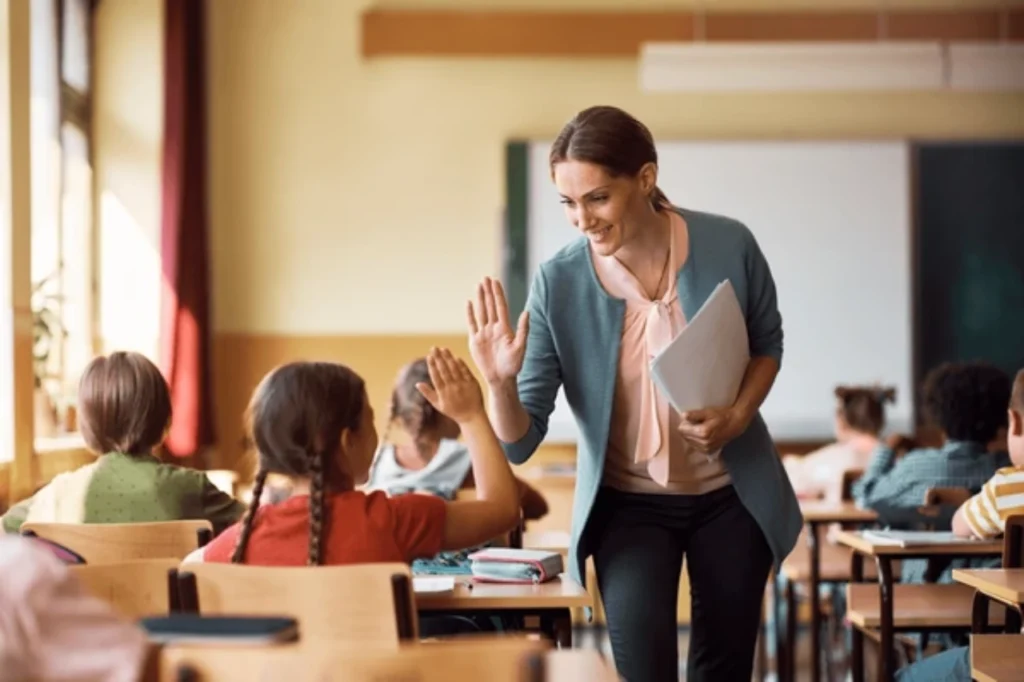
Our understanding of how kids learn has grown a lot. Now, we know that kids learn best when they use all their senses. This is different from old ways of teaching that only used one sense. Research shows that our brains work best when we use more than one sense at a time5.
Studies show that teaching kids in a way that uses all their senses can really help them learn. Research finds that this method can help kids do better in school, no matter where they come from6. Kids learn letters, sounds, and how to read and spell better with this method5. They also do better in math when they use hands-on tools5.
Teachers who use this method can see how well kids are doing and change their lessons to fit each child’s needs5. It’s especially good for kids with special needs, like autism or ADHD, because it meets their unique needs6. Young kids also learn better because they connect words with things they can touch6.
| Educational Approach | Key Findings |
|---|---|
| Multisensory Teaching |
|
| Traditional Unisensory Training |
|
As we keep learning more about how kids develop, teaching them in a way that uses all their senses is becoming more important. This method fits with what we know about how our brains work best. It makes learning more fun and effective for kids.
How Multisensory Learning Enhances Memory Formation
Using more than one sense when learning can greatly improve memory. Studies show that learning through different senses makes memories stronger and last longer7. This method uses the brain’s ability to change and adapt, making learning more effective.
Cross-Modal Memory Creation
Learning through sight, sound, taste, and touch helps keep information in memory better than using just one sense7. For example, research on Drosophila found that mixing colors and smells boosts memory more than learning with one sense8. This shows how combining senses can improve memory.
Long-Term Retention Benefits
Noticing sensory details helps the hippocampus store memories. These memories can last for a long time, even years7. Also, using strong tastes and smells, like cinnamon, helps remember things even when memory is weak, like in Alzheimer’s7. This shows how multisensory learning helps keep memories for a long time.
Neural Plasticity and Learning
Learning with multiple senses makes the brain more flexible and able to form strong connections. Music, for example, uses many parts of the brain, including those for sound, emotion, and movement. This rich experience helps encode memories better7. Such wide brain activity leads to better and longer-lasting learning.
In summary, multisensory learning is powerful because it creates lasting memories, improves retention, and uses the brain’s adaptability. By using more than one sense, we can make our memories stronger and understand things better78.
Visual Learning Components in Multisensory Education
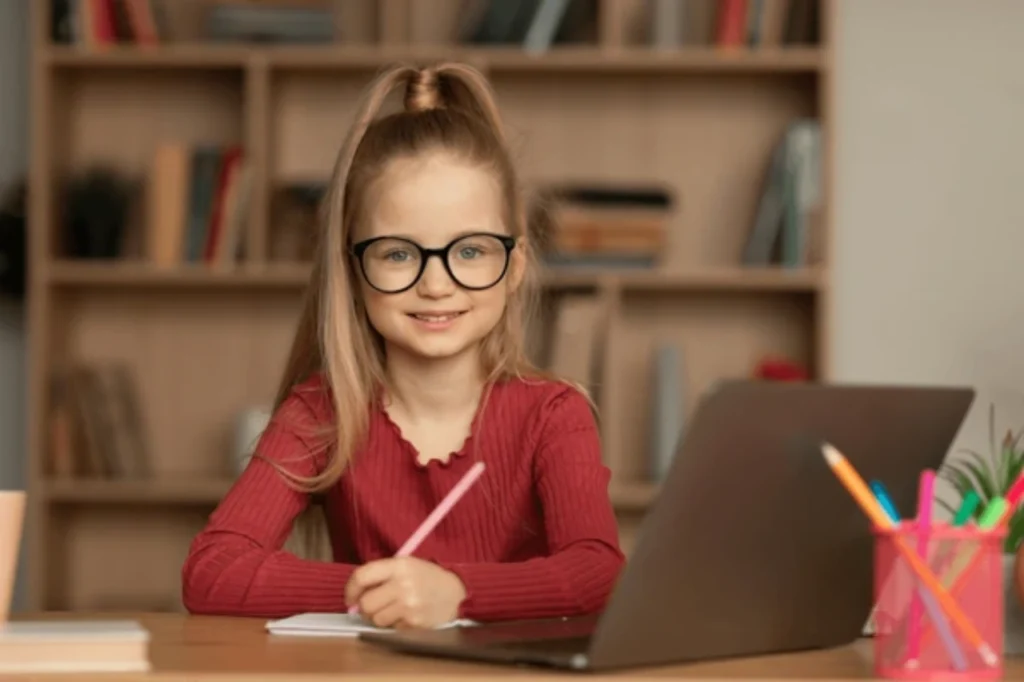
Visual aids are key in multisensory education, helping students understand complex ideas better9. Tools like diagrams, charts, and videos make learning concrete and easy to relate to. They help students remember and understand information better. Visual learning strategies are great for breaking down big ideas into smaller parts9.
Using visual elements in learning engages more senses in the brain, leading to better learning10. This method helps a wider range of learners because our brains are wired to learn in a multi-sensory way10.
- Visual aids, such as diagrams and charts, help students visualize and understand complex information.
- Incorporating videos and animations into lessons can make abstract concepts more relatable and engaging.
- Visual learning strategies, like color-coding and graphic organizers, assist in breaking down and organizing information.
The Orton-Gillingham method, a well-known approach in multisensory education, focuses on using visual aids and strategies9. The Institute for Multi-Sensory Education (IMSE) trains teachers to use these methods in their classrooms10.
| Visual Learning Strategies | Benefits |
|---|---|
| Diagrams and Charts | Visualize complex information, improve comprehension |
| Videos and Animations | Make abstract concepts more relatable and engaging |
| Color-Coding and Graphic Organizers | Break down and organize information, enhance understanding |
By adding visual learning elements to multisensory education, teachers can make learning more engaging and effective. This supports the varied needs of their students910.
Auditory Processing and Its Integration with Other Senses
Auditory processing is key in learning with multiple senses. Sound mixed with other senses boosts memory and recall. Kids with Sensory Processing Disorder (SPD) find it hard to learn this way compared to others11.
Sound and Memory Connection
Recent studies show that sound, sight, and touch work together early on12. The brain’s sound area gets help from vision and touch12. This teamwork leads to quicker learning, better detection, and clearer understanding12.
Speech and Language Development
Studies using brain imaging show how sound, sight, and touch work together in the brain12. This early teamwork is vital for learning to speak and understand language.
Musical Elements in Learning
Adding music to learning makes it more fun and helps in learning many skills. The brain’s sound area is key in processing music and mixing it with other senses12. This mix makes learning more complete and helps kids grow in all areas.
Using sound and other senses in learning makes lessons more fun and effective. Teachers and parents can create better learning spaces. This helps kids remember more, learn new languages, and grow smarter.
Tactile Learning: The Power of Touch in Education
Hands-on learning through touch is a key way to help kids grow. It lets them understand complex ideas better and learn more13. Studies show that kids who use touch to learn do better and stay motivated13. Touch-based learning is especially good for kids with ADHD and dyslexia13.
Kids who learn through touch like to play with things and feel them14. They use their sense of touch to learn, which helps them feel and understand better14. Using hands-on activities and interactive stuff in class helps kids see and understand abstract ideas13.
Learning through touch not only helps with school but also gets kids ready for jobs that need problem-solving13. Teachers can make learning fun and engaging by using different senses13.
| Tactile Learning Strategies | Benefits |
|---|---|
| Hands-on activities | Improved retention, understanding of complex concepts |
| Manipulation of physical objects | Visualization of abstract ideas, deeper comprehension |
| Sensory stimulation (touch, smell, taste) | Enhanced engagement, personalized learning experiences |
| Physical movement and action | Fostering problem-solving skills, analytical thinking |
Learning through touch isn’t just for school; it works at home too. Parents can do fun projects and games with their kids to help them learn14. Mixing touch with sight and sound makes learning better for everyone14.
“Engaging the sense of touch in the learning process not only enhances understanding but also cultivates a love for learning that lasts a lifetime.”
The power of touch in learning is huge. It makes kids curious, keeps them engaged, and gets them ready for life’s challenges13. By using touch, teachers and parents can help kids reach their full potential and succeed in life14.
Kinesthetic Elements in Multisensory Learning
Kinesthetic learning is a big part of multisensory education. It involves moving and actively participating in learning. This method is great for students who learn best by doing things.
Movement-Based Learning Activities
Kinesthetic learners need to move to learn better15. Even though they’re not the majority, all students benefit from hands-on learning15. Activities like Think-pair-share and Alphabet yoga help kinesthetic learners learn in fun ways15.
Physical Engagement in Learning
Studies show kinesthetic learning boosts skills like math and reading16. It lets students use different kinds of intelligence at once16. Games like Hot Potato make learning fun and memorable16.
Motor Skills Development
Music makes learning fun and helps kids remember things16. Songs like the ‘Hokey Pokey’ help kids learn better16. Role-playing and touch activities like shaving cream spelling teach numbers and letters well16. The Experience Curriculum uses movement and music to improve learning16.
The Impact of Multisensory Learning on Brain Development
Multisensory learning deeply affects how our brains grow and work. It uses many senses at once to make new connections in the brain. This way, it helps us learn and remember better. It makes learning stick by using different senses, creating stronger brain links17
Using senses like touch and movement helps students learn and understand better17. Hands-on activities make learning fun and help students remember things more easily17. By doing things and reading together, students get to understand and enjoy learning more17.
Learning in many ways is great for kids who like to do things to learn17. It helps all kinds of learners and makes learning easier for everyone17. This way, every child can become a confident reader and writer17.
Experts say we need to know most of the words in a text to really get it18. Multisensory learning is especially good for kids with ADHD, dyslexia, or autism. It helps them remember and think better18.
Using many senses in learning makes students more excited and involved18. Activities like acting, dancing, and science experiments let students think and learn on their own18.
Multisensory learning works with how our brains naturally learn from all senses18. Pictures, diagrams, and sounds make learning more fun and interactive18.
| Multisensory Learning Techniques | Benefits |
|---|---|
| Textured letters and phonics activities | Improved information absorption and processing17 |
| Hands-on literacy activities | Reinforced literacy skills through movement, making concepts more concrete and memorable17 |
| Manipulating objects and interactive reading sessions | Reinforced understanding and increased engagement in learning17 |
| Kinesthetic learning (role-play, dance, scientific experiments) | Helps students develop their own ideas and take ownership of their learning18 |
| Visual aids and audio resources | Enhanced understanding and interaction with content18 |
Teachers who know how to make learning fun and fit each student’s needs create a great learning space17. This space helps kids love reading and learning for life17.
Supporting Different Learning Styles Through Multisensory Approaches
Multisensory learning helps students in many ways. It offers different ways for them to learn. This way, teachers can meet the needs of each student, whether they learn best through seeing, hearing, touching, or moving.
Addressing Individual Learning Preferences
For visual learners, multisensory learning makes ideas clearer. It adds sounds, touch, or movement to what they see. This makes it easier to remember and understand.
It also makes learning more fun and engaging. This is especially true for visual learners.
Customizing Learning Experiences
Multisensory learning helps students use their strengths. It also helps them improve in other areas. This is good for students with ADHD, dyslexia, or autism.
It makes learning better for them. It also helps with memory and understanding. Students can learn and remember more easily.
Activities like role-play and dance help students think and learn. They feel more in control of their learning. This is good for everyone, including those with learning disabilities.
Classrooms that use multisensory learning are more exciting. They use pictures, sounds, and hands-on activities. This makes students more interested and involved.
Examples of multisensory learning include making posters and listening to stories. It also includes activities like painting and dancing. These activities help students learn in different ways.
Hirsch (2006) suggests that readers need to understand at least 90% of the words in a passage to comprehend it and learn new words effectively19.
- Studies from the National Institute of Child Health and Human Development have shown that for children with difficulties in learning to read, a multisensory teaching method is the most effective teaching method20.
- Students with learning difficulties typically have difficulties in one or more areas of reading, spelling, writing, math, listening comprehension, and expressive language20.
- Multisensory techniques enable students to use their personal areas of strength to help them learn, ranging from simple to complex depending on the needs of the student and the task at hand20.
- Researchers suggest that when students are taught using techniques consistent with their learning styles, they learn more easily, faster, and can retain and apply concepts more readily to future learning20.
- Most students, with a difficulty or not, enjoy the variety that multisensory techniques can offer20.
| Learning Style | Multisensory Approach | Benefits |
|---|---|---|
| Visual | Creating posters, drawing, using visuals | Reinforces visual information, builds comprehensive understanding |
| Auditory | Listening to audio, clapping rhythms | Activates auditory processing, enhances memory retention |
| Kinesthetic | Role-play, dance, scientific experiments | Promotes active engagement, develops ideas and ownership of learning |
| Tactile | Finger painting, using manipulatives | Provides hands-on experience, supports sensory integration |
Early Childhood Benefits of Multisensory Learning
Multisensory learning is great for young kids. It helps them explore and learn more easily22. It also boosts their thinking, social skills, and feelings, setting them up for success22.
It’s good for all kids, not just those with special needs22. By using different senses, like seeing, hearing, and touching, it meets many learning styles22. This way, kids remember better, stay interested, and understand more22.
Learning through senses makes it real and fun, like in cooking or sports22. Kids who like pictures and videos do well with visual aids22. Those who prefer listening enjoy talks and sounds22. Hands-on activities are best for kids who like to do things22. Teachers can use these methods to help each child learn in their own way22.
| Learning Style | Multisensory Techniques |
|---|---|
| Visual | Diagrams, illustrations, videos |
| Auditory | Lectures, discussions, audio materials |
| Kinesthetic | Hands-on activities, manipulatives, movement-based tasks |
It’s especially good for kids with ADHD, dyslexia, or autism23. To really learn, kids need to understand most of what they read23. Multisensory learning uses all senses to help kids learn better23. It helps them remember and think more clearly23.
Using multisensory methods in class makes kids more excited and involved23. Some learning problems might not show up until later in life23. So, using these methods helps all students learn better23. They can help kids of all ages and subjects23.
“A classroom with visual aids like photos, diagrams, maps, and audio resources like recordings of speeches or songs improves student engagement.”23
Academic Performance and Multisensory Engagement
Many studies show the great benefits of multisensory learning on school success. Research shows that using multiple senses in boosts grades and learning results24. Students learn faster in reading, writing, and math with this method than with just one sense24.
Assessment Results and Learning Outcomes
Teaching with multiple senses helps students connect new info to what they already know. This makes them understand and remember better24. It also helps them think critically and solve problems, which is key for success in complex jobs24. Plus, it improves working memory, which is important for doing well in school24.
Skill Development Measurements
Multisensory education training makes learning more effective by using more senses at once24. For example, in nursing school, using different objects like peas and balloons helps students learn better24. This method also helps with understanding, solving problems, and thinking critically24.
The Multisensory Integration Approach Model has seven steps and has been used in science teaching. It shows how this method can really help students do better in school24. Also, research shows that using multiple senses in learning can boost language skills, reading and writing, and make students more motivated and creative25.
“Multisensory learning has been shown to increase success and retention in education, as evidenced in studies by Nurjanah (2017) and Birsh (2011).”25
In summary, using multiple senses in the classroom greatly improves learning and success. It’s a powerful tool for teachers and parents to help students do their best.
Social and Emotional Benefits of Multisensory Learning
Multisensory learning does more than just improve grades. It also boosts emotional intelligence and social skills in kids. This method uses many senses to teach, helping kids feel empathy, communicate better, and know themselves.
Working together on multisensory projects, kids learn to team up and share ideas. It’s especially good for kids with ADHD, dyslexia, or autism. It makes learning fun and keeps kids interested26.
By using all senses, multisensory education helps kids understand themselves and the world better26. It gives them a rich learning experience. This way, kids grow up with the emotional intelligence and social skills to succeed in school and life.
| Benefit | Description |
|---|---|
| Improved Language and Literacy Development | Multisensory learning engages multiple senses to aid in the cognitive development of children, including language and literacy skills27. |
| Enhanced Motor Skills | The approach of multisensory learning strengthens motor skills in children through hands-on, interactive experiences27. |
| Stronger Social and Emotional Growth | Multisensory learning promotes social and emotional growth in children, helping them develop important life skills27. |
Multisensory learning uses visual, auditory, tactile, kinesthetic, olfactory, and gustatory sensory experiences. It helps students of all ages in all subjects. It makes learning stick, and keeps kids engaged26. This holistic approach is key for today’s and tomorrow’s kids, giving them a strong base for success27.
“Multisensory learning engages multiple senses to aid in the cognitive development of children.”
Key Takeaways
- Multisensory learning promotes the development of emotional intelligence and social skills in children.
- Collaborative multisensory activities encourage teamwork and social interaction.
- Multisensory education activates diverse learning modalities and supports students with various needs.
- Integrating multiple sensory experiences enhances understanding, memory retention, and engagement.
- Multisensory learning is essential for a holistic and well-rounded education.
Implementing Multisensory Learning at Home and School
Parents and teachers must work together for multisensory learning to succeed. By making learning spaces rich in sensory experiences, kids get a full learning experience at home and school28.
Parent-Teacher Collaboration
Parents can add multisensory activities to their daily life, matching what kids learn in school. This teamwork makes sure kids keep learning in a fun way28. Teachers can also make classrooms exciting by using different senses in their lessons28.
Creating Multisensory Environments
It’s key to have rich sensory spaces at home and in school for learning. Parents can create special areas with touch, sight, and sound for kids to explore28. Teachers can also make lessons more engaging by adding hands-on activities, music, and movement28.
Working together, parents and teachers can help kids do well in multisensory learning28. This teamwork makes learning better, helping kids remember more and grow in many ways28.
“Multisensory learning creates a more engaging and effective educational experience for students, empowering them to reach their full potential.” –29
Using multisensory learning with other teaching methods can make learning better28. Teachers should adjust lessons to fit each student’s needs and follow a clear plan28. It’s also important not to focus too much on one way of teaching, like multisensory, for reading skills28.
By working together, parents and teachers can help kids succeed in multisensory learning28. This teamwork leads to better grades, better memory, and overall growth28.
Supporting Special Educational Needs Through Multisensory Approaches
Multisensory learning helps students with special needs a lot. This includes those with learning disabilities, dyslexia, ADHD, and autism. It uses sight, sound, touch, taste, smell, and movement to help students learn better30.
Research shows that multisensory learning is the best way to teach kids with learning problems31. It makes learning fun and helps kids remember things better31. For students with disabilities, it makes learning more hands-on or through sound, helping them connect with the material31.
The Gateway School in New Jersey has been helping special education students since 198031. They use multisensory learning to help students learn and grow. This way, schools can make learning fun and inclusive for everyone.
FAQ
What is multisensory learning, and how does it benefit overall development?
How does the brain respond to multisensory inputs?
How have educational approaches evolved to recognize the importance of multisensory stimulation?
How does multisensory learning enhance memory formation?
What is the role of visual components in multisensory education?
How does auditory processing integrate with other senses in multisensory learning?
What is the role of tactile learning in multisensory approaches?
How do kinesthetic elements contribute to multisensory learning?
How does multisensory learning impact brain development?
How can multisensory approaches support different learning styles?
What are the benefits of multisensory learning in early childhood education?
How does multisensory learning impact academic performance?
What are the social and emotional benefits of multisensory learning?
How can parents and teachers effectively implement multisensory learning?
How can multisensory approaches benefit children with special educational needs?
Source Links
- Researchers discover why multisensory learning is beneficial for memory — Department of Physiology, Anatomy and Genetics (DPAG)
- The Benefits of Multisensory Learning with Research-Based Materials
- Three Reasons Why Multisensory Learning is Food for the Brain – Orton Gillingham Online Academy
- Understanding Multi-Sensory Instruction – Orton-Gillingham.com
- The Role of Multi-Sensory Learning in Elementary Classrooms on Student Development
- Understanding the Parents’ Role in Multisensory Learning and Education
- Harnessing the Senses to Improve Memory
- Multisensory learning binds neurons into a cross-modal memory engram – Nature
- Multi-Sensory Learning: Types of Instruction and Materials
- Three Components of Multi-Sensory Instruction | IMSE
- Multisensory Audiovisual Processing in Children With a Sensory Processing Disorder (I): Behavioral and Electrophysiological Indices Under Speeded Response Conditions
- Multisensory Influences on Auditory Processing – The Neural Bases of Multisensory Processes
- Tactile Learning Strategies
- Unlocking the Power of Tactile Learning Style: A Comprehensive Guide
- Engage Kinesthetic Learners With a Multisensory Approach to Teaching
- Kinesthetic Multi-Sensory Learning | Inspired Learning
- The Role of Multisensory Learning in Literacy Development
- What Is Multisensory Learning in Education?
- What Is Multisensory Learning in Education?
- What are Multisensory Teaching Techniques?
- Multisensory Learning to Support Visual Thinkers
- What is Multisensory Learning: Benefits for Your Child
- What Is Multisensory Learning in Education?
- Multisensory integration approach, cognitive domains, meaningful learning: reflections for undergraduate nursing education
- Frontiers | The impact of multisensory learning model-based tale-telling on listening skills and student opinions about it
- What Is Multisensory Learning in Education?
- Benefits of Multisensory Learning in Early Childhood
- Bring These 5 Multisensory Teaching Strategies Home
- What is Multisensory Learning & How to Implement Multisensory Teaching
- Multisensory learning: A powerful approach for students with special needs – OrbRom Center
- Multisensory Approach in Special Education – NJ Special Needs School

